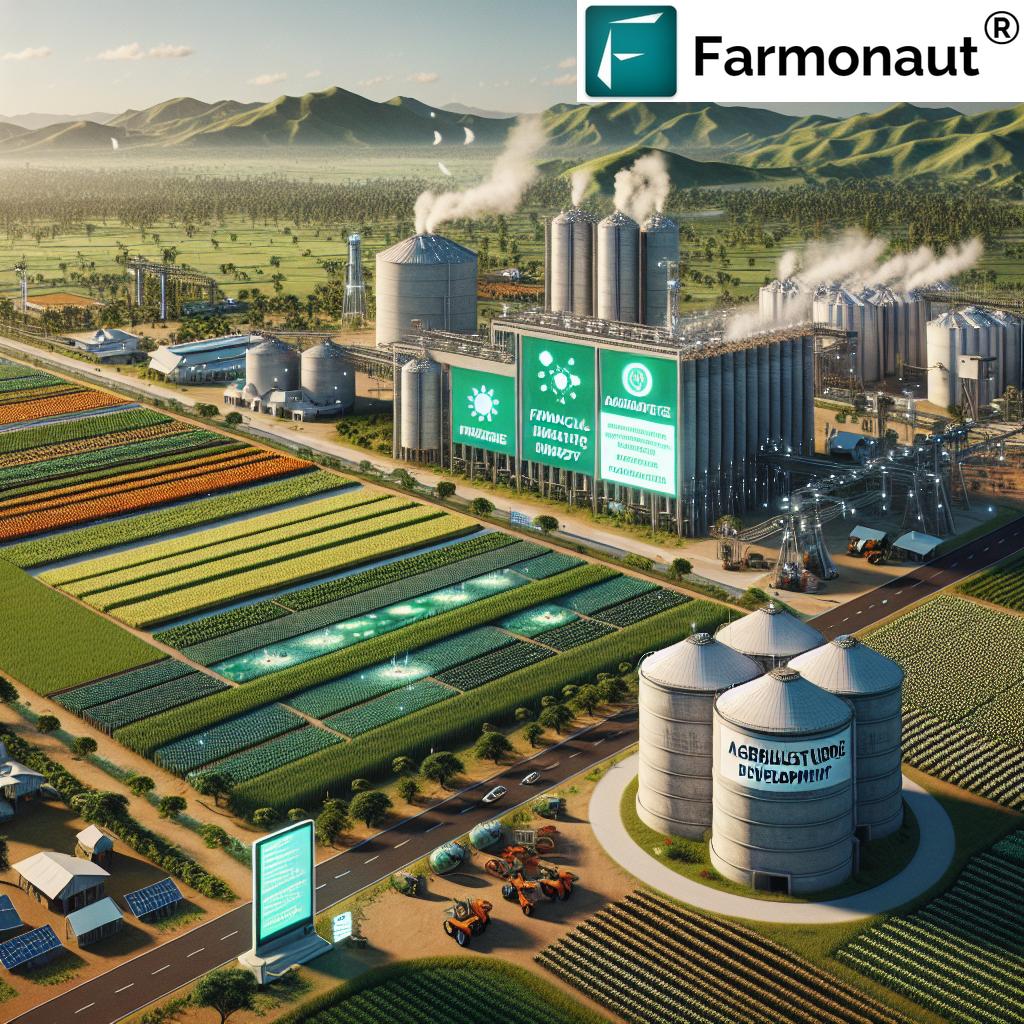Current Agriculture Issues 2025 India: 9 Urgent Fixes
“2025 plan spotlights 9 urgent agricultural fixes: climate resilience, water conservation, soil health, and market access gaps.”
India’s agriculture stands at a crossroads in 2025. The sector is both foundational to rural livelihoods and national food security, yet it is beset by interlinked structural, environmental, and market-driven challenges. Climate change has moved from projection to lived reality—erratic monsoons, unseasonal rains, heatwaves, and prolonged dry spells are reducing yields and altering pest and disease patterns. Meanwhile, water scarcity, groundwater depletion, and soil health deterioration compound risks for smallholders who still cultivate much of the country’s arable land.
These agriculture current issues and current farming issues threaten productivity and profitability, particularly in states where paddy and sugarcane dominate and diesel pumps drive inefficient surface irrigation. Market access remains uneven; value chains suffer from weak aggregation, poor cold chain infrastructure, and high post-harvest losses for fruits and vegetables—limiting opportunities for higher returns and export growth. This article maps the current agriculture issues 2025 India faces, and outlines nine urgent fixes—sustainable, digital, and policy-driven—to improve resilience and incomes.
Table of Contents
- Why 2025 Stands at a Crossroads for India’s Agriculture
- 9 Urgent Fixes for Current Issues in Indian Agriculture
- Policy Coherence and Governance Reforms for 2025 and Beyond
- 9 Urgent Fixes: Issue–Impact–Action Matrix (2025 India)
- How We Support Sustainable, Digital Fixes (Farmonaut)
- FAQs: Current Agriculture Issues 2025 India
Why 2025 Stands at a Crossroads for India’s Agriculture
In 2025, agriculture in India is simultaneously resilient and vulnerable. It underpins national food security and rural livelihoods, yet it is beset by climate change and structural market gaps. Agriculture current issues include:
- Climate variability and extremes: erratic monsoons, unseasonal rains, heatwaves, prolonged dry spells reducing yields and heightening risks for rainfed smallholders.
- Water scarcity and groundwater depletion: acute in many states, driven by over-extraction for paddy and sugarcane, coupled with inefficient surface irrigation and aquifer stress.
- Soil degradation and nutrient imbalances: rising salinity, declining organic matter, and heavy dependence on costly chemical inputs whose prices and supply volatility squeeze margins.
- Fragmentation of small landholdings: constraining economies of scale, mechanization, and investment—leading to low farm incomes and chronic indebtedness.
- Market and value chain constraints: uneven access, weak aggregation, poor cold chain infrastructure, and high post-harvest loss in fruits and vegetables.
- Labor shortages driven by migration: accelerating the need for affordable mechanization, digital extension, and skilling.
- Policy uncertainty: fragmented governance, uneven reforms, and challenges in insurance payouts, credit access, and export-import volatility.
- Environmental concerns: overuse of groundwater, fertilizers, and pesticides threatening biodiversity and long-term productivity.
These current issues in Indian agriculture are not isolated; they are interlinked. For instance, water scarcity and soil health degradation amplify climate risks; market volatility and inadequate risk mitigation erode profitability; and the digital divide slows the adoption of precision agriculture. The sector needs integrated, scalable solutions in 2025 and beyond.
The 9 Urgent Fixes for Current Issues in Indian Agriculture 2025
Below, each fix addresses a current issue in agriculture with practical actions that combine sustainable agronomy, digital tools, and enabling policy reforms. The approach centers on climate, water–soil health, and market systems. The goal: improved productivity, profitability, and resilience for farmers across India’s states—from Punjab and Haryana to Maharashtra, Karnataka, Tamil Nadu, Andhra Pradesh, Telangana, Gujarat, Rajasthan, Uttar Pradesh, Bihar, West Bengal, and Madhya Pradesh.
Fix 1: Climate Variability and Extremes
Challenge: Climate change has moved from projection to lived experience. Erratic monsoons, unseasonal rains, heatwaves, and prolonged dry spells are reducing yields, altering pest and disease patterns, and heightening risks. Rainfed smallholders cultivate much arable land and face the greatest exposure.
Action:
- Climate-resilient cropping: diversify beyond single-crop cycles; deploy drought-tolerant and heat-tolerant varieties.
- Weather-indexed risk mitigation: expand improved insurance that triggers payouts based on rainfall/temperature indices.
- On-farm water harvesting: contour bunds, farm ponds, and local recharge structures to buffer dry spells.
- Seasonal advisories: timely, localized agri-advisory to shift sowing windows and input plans around forecasted risks.
Expected outcomes: reducing climate-related yield losses; stabilizing incomes; and maintaining national food security under rising environmental stress.
Fix 2: Water Scarcity and Groundwater Depletion
Challenge: Water scarcity and depletion are acute in many states. Over-extraction for paddy and sugarcane, coupled with inefficient surface irrigation, drives aquifer stress. Increased costs hit farmers who rely on diesel pumps. These pressures remain high, yet micro-irrigation access is still uneven.
Action:
- Micro-irrigation scale-up: drip and sprinkler systems to reduce water use and energy costs; incentivize sensor-based scheduling.
- Watershed recharge: revive tanks, check dams, and canals; integrate community water budgeting anchored in panchayat institutions.
- Crop planning: shift from water-guzzling crops in stressed aquifers toward millets, pulses, and oilseeds.
- Digital water monitoring: remote sensing of soil moisture and NDWI to fine-tune irrigation and optimize water allocations.
Fix 3: Soil Degradation and Fertility Decline
Challenge: Nutrient imbalances, rising salinity, and declining organic matter reduce resilience and raise dependence on costly chemical inputs—whose prices and supply volatility continue to squeeze margins. Poor soil health threatens productivity and long-term profitability.
Action:
- Organic matter rebuild: composting, green manures, and crop residues to increase soil organic carbon.
- Balanced nutrition: integrate biofertilizers with targeted NPK, using soil testing and variable input application.
- Reduced tillage and cover crops: conserve moisture, reduce erosion, and cut GHG emissions from diesel-powered operations.
- Salinity management: gypsum, salt-tolerant varieties, and improved drainage, especially in coastal belts and canal command areas.
Fix 4: Pest and Disease Surges
Challenge: Altering pest and disease patterns—driven by warmer nights, humidity spikes, and unseasonal rains—are increasing crop losses. Smallholders face acute risks due to limited scouting and advisory access.
Action:
- Integrated pest management (IPM): pheromone traps, biocontrol agents, and threshold-based spraying.
- Digital scouting: satellite and AI tools to identify hotspots; push advisories on timing, dosage, and weather-safe spray windows.
- Disease-resilient varieties and crop rotations: break pathogen cycles while maintaining yields.
- Farmer training via extension: participatory learning to reduce overuse of chemical pesticides and improve health outcomes.
Fix 5: Input Cost Spikes and Price Volatility
Challenge: Prices of fuel, fertilizers, and agrochemicals show volatility. Supply shocks and currency fluctuations add unpredictability. Farmers face low and erratic farm-gate prices, especially when markets are glutted post-harvest. Incomes remain low, and indebtedness can become chronic without adequate risk mitigation.
Action:
- Group input procurement through FPOs and cooperatives to lower per-unit costs.
- Variable rate application: reduce waste of inputs through data-driven dosage.
- Hedging and storage: hedge price risk (where available) and use warehousing receipts to time sales.
- Energy transition: reduce reliance on diesel pumps via efficient irrigation and solar solutions.
Fix 6: Post-Harvest Loss and Cold Chain Gaps
Challenge: Value chains remain weak in aggregation and cold chain infrastructure. High post-harvest losses—particularly in fruits and vegetables—erode revenues and limit export growth opportunities. Rural logistics and market linkages are uneven.
Action:
- Village-level aggregation and pre-cooling: improve first-mile handling to cut spoilage.
- Packhouses, reefer transport, and grading: enable quality-based pricing and reduce rejections.
- Digital traceability: build trust, meet food safety norms, and access premium markets.
- Processing and value addition: stabilize prices and create higher returns for perishable crops.
Fix 7: Market Access Gaps, MSP Linkages, and Value Chains
Challenge: Minimum Support Price (MSP) assurances and procurement help in select crops, yet market access remains uneven. Many farmers cannot reach reliable buyers for diversified crops. Fragmentation limits economies of scale in marketing, while price discovery and transparency remain areas for improvement.
Action:
- Strengthen Farmer Producer Organizations (FPOs): aggregation for scale, collective bargaining, and contract compliance.
- Digital marketplaces: transparent price discovery; direct linkages to institutional buyers.
- Quality differentiation: grading and standardization to access higher-value segments.
- Export readiness: residue testing, traceability, and logistics to meet non-tariff measures.
Fix 8: Credit and Insurance Gaps
Challenge: Formal credit access has improved, yet collateral-free, flexible financing is still inadequate for smallholders to invest in mechanization, micro-irrigation, and storage. Insurance enrollment rose, but timely payouts and coverage adequacy need improvement—especially for rainfed agriculture.
Action:
- Satellite-verified crop monitoring for loan underwriting and claim verification.
- Weather-indexed insurance: faster, more objective payouts.
- Flexible credit products: align repayment with cropping cycles and market prices.
- Financial literacy and bundling: combine input financing, advisory, and insurance.
Fix 9: Digital Divide, Labor Shortages, and Mechanization
Challenge: Rural-urban migration and changing demographics lead to labor shortages at peak sowing and harvesting windows. Mechanization can help, yet adoption is uneven. The digital divide—connectivity, device access, and digital literacy—slows uptake of precision agriculture, farm advisory, and market platforms.
Action:
- Smallholder-appropriate mechanization: rental models, shared services, and scalable implements.
- Digital extension: multilingual audio-visual advisories and WhatsApp-based support to bridge literacy gaps.
- Skilling programs: targeted training in machinery operation, maintenance, and safety.
- Connectivity: improve last-mile internet access to unlock digital services at scale.
“Three sustainability pillars—climate, water-soil health, markets—anchor policy-driven reforms to strengthen farmer resilience nationwide.”
Policy Coherence and Governance Reforms for 2025 and Beyond
Effective reforms need coherence between central and state systems. Agriculture is a state subject, yet national schemes shape investments and incentives. Aligning program design across crops, geographies, and risk profiles will close gaps that currently threaten productivity and profitability. Priorities for 2025:
- Integrated water–soil–climate planning: converge micro-irrigation, watershed, soil health cards, and climate-smart advisories.
- Outcome-based budgeting: measure water saved, soil organic carbon increased, GHG emissions reduced, and yield gains achieved.
- Streamlined insurance and credit: faster claim processing through satellite verification; weather-indexed products; improved coverage and transparency.
- Market reforms: ease logistics, expand digital marketplaces, promote quality-based pricing, and improve cold chain infrastructure.
- Strengthen FPOs: targeted grants, training, and governance support to scale aggregation and value addition.
- Mechanization and skilling: promote rental models and rural service enterprises to address labor shortages.
- Data governance: protect farmer data while improving access to advisories; build trust in digital extension systems.
9 Urgent Fixes: Issue–Impact–Action Matrix (2025 India)
This matrix summarizes the agriculture current issues, their impacts, and actionable, sustainable/digital responses for India in 2025 and beyond. Click headers to sort. Anchor links: Climate · Water · Soil · Pest/Disease · Input Costs · Post-Harvest · Markets · Credit/Insurance · Digital Divide
| Issue (2025 India) | Affected Area (Mha, est.) | Farmers Impacted (million, est.) | Current Impact (yield loss %, revenue loss %, est.) | Root Cause | Sustainable/Digital Fix | Farmonaut Solution Mapping | Expected Benefit (yield gain %, water saved %, GHG cut %, est.) | Cost Band (₹/acre, est.) | ROI/Payback (months, est.) | Timeframe to Implement | Policy/Program Lever | Priority Score (1–5, est.) |
|---|---|---|---|---|---|---|---|---|---|---|---|---|
| Climate variability | 80–120 | 60–90 | 5–20% yield; 5–15% revenue | Erratic monsoons, heatwaves, unseasonal rains | Drought/heat-tolerant seeds; diversified systems; weather-indexed insurance | Satellite crop monitoring; Jeevn AI advisories; insurance API support | 5–12% yield gain; 3–7% GHG cut | 300–1,200 | 6–18 | Short–Medium | Climate-smart schemes; PMFBY enhancements | 5 |
| Water scarcity & groundwater depletion | 40–70 | 30–50 | 10–25% yield; 8–20% revenue | Over-extraction; inefficient surface irrigation; aquifer stress | Micro-irrigation; watershed recharge; crop shifts; soil moisture monitoring | NDWI & soil moisture maps; Jeevn irrigation advice | 10–30% water saved; 4–10% yield gain | 1,500–6,000 | 8–24 | Medium–Long | PMKSY micro-irrigation; watershed programs | 5 |
| Soil degradation | 50–100 | 40–70 | 7–18% yield; 6–15% revenue | Imbalances, rising salinity, declining organic matter | Organic matter rebuild; balanced nutrition; reduced tillage | NDVI/soil condition indices; carbon tracking | 5–15% yield gain; 5–12% GHG cut | 400–2,000 | 6–18 | Medium | Soil Health Card; regenerative incentives | 5 |
| Pest/disease surges | 20–40 | 15–30 | 5–15% yield; 5–12% revenue | Warmer nights, humidity spikes, altered patterns | IPM, digital scouting, resilient varieties | Hotspot alerts via satellite; Jeevn AI IPM tips | 4–10% yield gain; 15–25% pesticide cut | 300–1,000 | 3–12 | Short | IPM promotion; extension strengthening | 4 |
| Input cost spikes & volatility | 100–130 | 70–100 | –; 6–20% revenue loss | Fuel/fertilizer price swings; supply volatility | Group procurement; variable rate; energy transition | Field variability mapping; advisory for dosage | 8–15% input savings | 200–800 | 4–10 | Short | FPO support; energy-efficiency schemes | 4 |
| Post-harvest loss | 10–20 | 20–35 | –; 10–25% revenue loss | Weak aggregation; poor cold chain; handling gaps | Pre-cooling; packhouses; traceability; processing | Blockchain traceability; logistics mapping | 5–12% revenue gain; 15–30% loss reduction | 800–3,500 | 8–18 | Medium | Cold chain incentives; warehousing receipts | 4 |
| Market access gaps | 70–100 | 50–80 | –; 5–15% revenue loss | Uneven access; price discovery; small scale | FPO aggregation; e-markets; quality grading | Satellite-verified lots; digital records | 6–14% revenue gain | 250–900 | 6–12 | Short–Medium | e-market expansion; FPO programs | 4 |
| Credit & insurance gaps | — | 40–70 | — | Collateral needs; slow claim processing | Satellite-verified lending; weather-indexed cover | APIs for loan/insurance verification | Faster payouts; reduced defaults | 100–500 | 3–9 | Short | PMFBY upgrades; KCC reforms | 5 |
| Digital divide & mechanization gaps | 50–80 | 35–60 | 3–8% yield loss (timeliness); 4–10% revenue | Connectivity, skills, and capital constraints | Rental machinery; WhatsApp advisories; skilling | Mobile app; WhatsApp connect; fleet tracking | 3–9% yield gain; labor saved | 300–2,000 | 4–12 | Short–Medium | Digital extension; custom hiring centers | 4 |
Notes: Mha = million hectares. Estimated ranges reflect 2025 India conditions and may vary by state and crop. Yield/revenue impacts are indicative. Cost band reflects typical advisory/monitoring, aggregation, or basic infra services per acre, excluding major capex like full drip installations. ROI and timeframes assume enabling policy/program access. GHG = greenhouse gases.
How We Support Sustainable, Digital Fixes in 2025
We are a satellite technology company focused on making satellite-driven insights affordable and accessible to farmers, businesses, and governments. Our platform blends satellite imagery, AI, and blockchain to help address the current issue in agriculture across climate, water–soil health, markets, and risk mitigation. Our tools are available via Android, iOS, web/browser app, and API. We provide real-time monitoring, AI-based advisory through Jeevn AI, blockchain traceability, and resource management—all designed to support improved productivity and sustainability.
- Satellite-Based Monitoring: We deliver multispectral insights including vegetation indices such as NDVI to monitor crop vigor, spot stress early, and guide targeted inputs while reducing costs.
- Jeevn AI Advisory System: We offer real-time, localized advisories on weather, sowing windows, irrigation, and pest/disease risk management to improve outcomes under climate variability.
- Blockchain-Based Traceability: We enable farm-to-market transparency to open higher-value channels, reduce fraud, and meet export requirements—supporting quality assurance and consumer trust.
- Fleet and Resource Management: We provide tools to optimize machinery, reduce idle time, and improve on-time operations—critical where labor shortages and migration constrain peak-season tasks.
- Environmental Impact Monitoring: We help monitor carbon footprint and resource use, supporting climate-smart practices and regenerative agriculture efforts.
Developers and enterprises can integrate satellite and data insights through our APIs for lending, insurance, and operational decision-making. Explore:
- Farmonaut API — connect programmatically to satellite layers, crop health indicators, and environmental metrics.
- API Developer Docs — review endpoints, authentication, and integration examples to build custom agriculture workflows.
Use-case links for 2025 priorities:
- Carbon Footprinting — quantify and monitor farm-level emissions and sequestration; align regenerative practices with measurable GHG cuts and potential carbon income streams.
- Product Traceability — blockchain-secure records of harvests and inputs; unlock premium markets and improve export readiness with verifiable, tamper-evident data.
- Crop Loan and Insurance — satellite-based verification supports faster, more objective underwriting and claims, improving access while reducing risk.
- Fleet Management — optimize machinery usage, routes, and maintenance schedules to deliver timely operations and lower fuel costs.
- Large-Scale Farm Management — coordinate multi-farm operations with satellite dashboards, advisories, and team workflows.
- Crop Plantation & Forest Advisory — plan and monitor agroforestry/plantation initiatives, supporting soil conservation and diversified income streams.
Getting started is simple. Access our platform on web and mobile:
Actionable Guidance by Theme (Climate, Water–Soil, Markets)
Climate-smart agronomy
- Choose varieties with drought/heat tolerance relevant to your state’s agro-climatic zone.
- Adjust sowing dates based on 10–15 day forecasts and soil moisture conditions.
- Adopt intercropping and crop rotations to spread risk across seasons.
- Use mulching and cover crops to buffer heatwaves and conserve moisture.
Water and soil health first
- Prioritize micro-irrigation, especially for vegetables and high-value crops.
- Rebuild soil organic matter with compost, residues, and reduced tillage.
- Balance nutrients using test-based plans; avoid blanket chemical input application.
- In salinity-prone zones, improve drainage and use salt-tolerant varieties.
Market and value-chain alignment
- Aggregate through FPOs for scale in procurement and sales.
- Invest in grading and basic cold chain where feasible for higher price realization.
- Adopt digital traceability for quality assurance and export markets.
- Use storage and warehouse receipts to avoid distress sales and manage price volatility.
FAQs: Current Agriculture Issues 2025 India
What are the top current issues in Indian agriculture in 2025?
The most pressing include climate variability, water scarcity and groundwater depletion, soil degradation, pest and disease surges, input cost spikes, post-harvest loss, market access gaps, credit and insurance gaps, and the digital divide paired with mechanization needs.
How do these challenges threaten productivity and profitability?
Climate extremes reduce yields; water scarcity raises costs for diesel pumps and irrigation; degraded soils need more inputs; market volatility and price shocks squeeze margins; and weak value chains cause high post-harvest loss. Together, they reduce farm incomes and increase risk.
Which crops are most affected?
Water-intensive crops like paddy and sugarcane are heavily affected in groundwater-stressed states. Fruits and vegetables suffer from post-harvest loss without cold chains. Rainfed cereals, pulses, and oilseeds face yield variability from dry spells and erratic monsoons.
What role can digital tools play?
Digital extension, satellite monitoring, and AI advisories support precise input use, irrigation scheduling, and early pest/disease detection. They also enable traceability and market linkages, improving price realization and reducing losses.
How do policy reforms help?
Policy coherence can integrate water–soil–climate actions, expand micro-irrigation, strengthen insurance, improve credit access, and build market infrastructure. These reforms reduce risks and enable investment in sustainable practices.
Is Farmonaut a marketplace or input seller?
No. We are not an online marketplace, manufacturer, or seller of farm inputs/machineries, and not a regulatory body. We provide satellite, AI, and blockchain-based tools, advisories, and APIs to support decision-making and resource management in agriculture and related sectors.
How can smallholders benefit in the near term?
Practical steps include adopting micro-irrigation where feasible, improving soil organic matter, using digital advisories to time operations, aggregating through FPOs for inputs and sales, and exploring insurance with weather-indexed features.
Conclusion: From Beset Systems to Resilient Growth
India’s agriculture sector in 2025 faces interlinked environmental and structural challenges that threaten productivity and profitability. Yet with sustainable practices, data-driven advisory, and coherent policy reforms, the sector can become more resilient, inclusive, and productive. Climate-smart seeds and diversified systems can stabilize yields. Micro-irrigation and watershed recharge can restore water balance. Organic matter rebuild and balanced nutrition can repair soil health. Stronger value chains, cold chains, and traceability can raise returns and enable export growth. Finally, digital extension, mechanization, and targeted skilling can offset labor shortages and close the digital divide.
We remain focused on making satellite and AI insights affordable and accessible to farmers, FPOs, enterprises, and governments. Through real-time monitoring, Jeevn AI advisories, traceability, and resource management, we aim to support agriculture’s transformation—anchored in sustainability and measurable impact.
Keywords addressed: agriculture current issues, current farming issues, current agriculture issues 2025, current issues in Indian agriculture, current issue in agriculture, agriculture, rural, farm, market, digital, farmers, soil, mechanization, investment, India, 2025, environmental challenges, climate change, water scarcity, groundwater depletion, MSP, insurance, extension, value chains, aggregation, cold chain, fruits, vegetables, prices, volatility, productivity, profitability, smallholders, diesel pumps, paddy, sugarcane, irrigation, aquifer stress, resilience, organic inputs, chemical supply, margins, fragmentation, small landholdings, economies of scale, chronic indebtedness, erratic price systems, risk mitigation, procurement, export growth, labor shortages, migration, policy reforms, improved sector.












